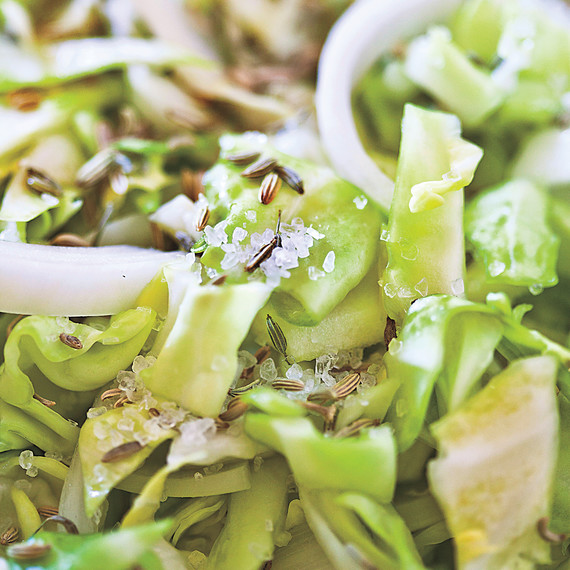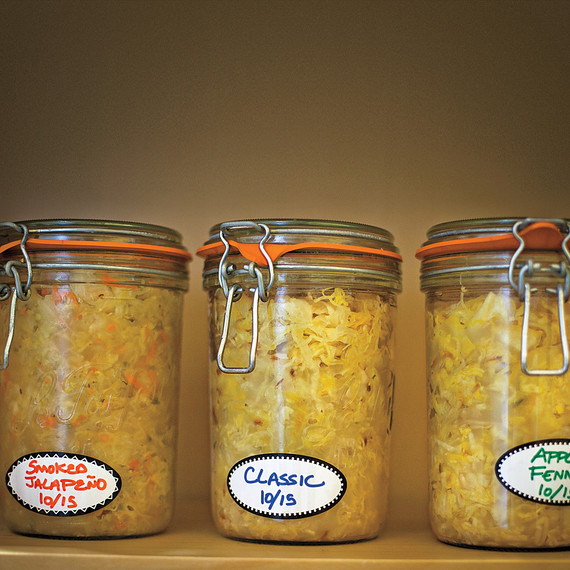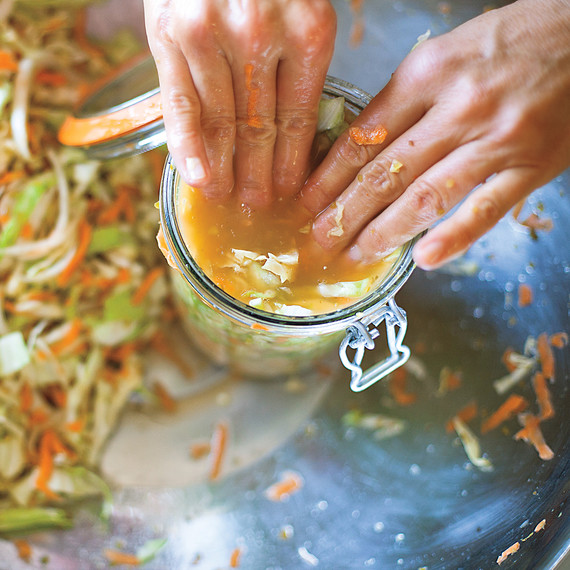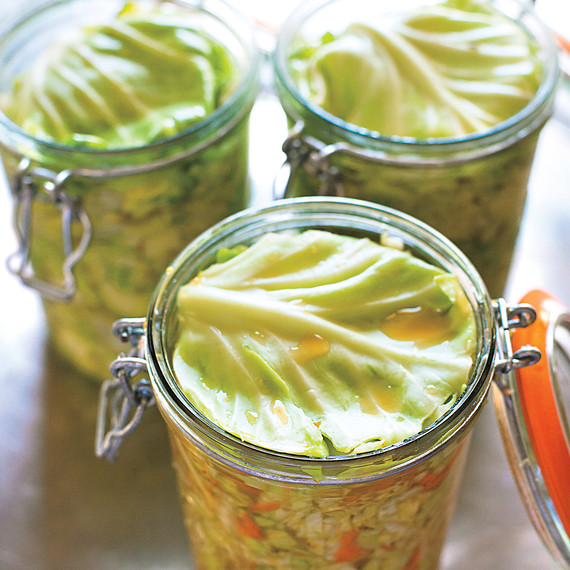Ready for Natural Fermentation 101? We consulted Kathryn Lukas, the founder of Farmhouse Culture, a small organic sauerkraut company in northern California, for the tricks of the trade. Let's start with a little of the science behind sauerkraut: Letting the cabbage ferment at room temperature invites beneficial bacteria to grow. These microorganisms feed on sugars in the vegetables and raise levels of lactic acid, giving fermented foods their tang while also preserving them. Here's how to get sauerkraut just right.
Get Farmhouse Culture's Classic Kraut with Caraway Recipe

1. Get the Gear
For avid picklers and sauerkraut makers, a fermenting crock -- a clay vessel with an airtight lid -- is a good investment. But for smaller batches, wire-bale glass jars (the ones with toggle clasps and rubber gaskets) work just fine.

2. Experiment with Flavors
For a straight-up sauerkraut like the one above, you need only cabbage, caraway seeds, and salt. But Lukas and her team also regularly add other sliced vegetables or fruit, including carrots, fennel, and apples. She suggests a mix of 75 percent cabbage to 25 percent other produce. She also suggests skipping cucumbers or zucchini; enzymes they contain make the kraut lose its crispness.

3. Watch the Temperature
Sauerkraut ferments best in a cool, dark place at a temperature that is consistently 64 to 70 degrees. In hot weather, let the jars stand in a dark corner in the back of a closet. At cool times of the year, a cupboard above the refrigerator is a safe bet.

4. Check on the Brine
It is important that the cabbage stay submerged in liquid. If the brine bubbles out during fermentation, replace it with a solution of coarse salt dissolved in filtered water, using a ratio of one tablespoon to one cup.

5. Open the Jar
After five days, open and close the lid quickly to release air (specifically, carbon dioxide) from the jar. Repeat every five days or so during the three weeks of fermentation.
Get Farmhouse Culture's Classic Kraut with Caraway Recipe
Original article and pictures take www.marthastewart.com site
Комментариев нет:
Отправить комментарий